The Irresistible Fried Breads of Peloponnese
Fruity Olive oil, the region’s main product, is in the dough but also used to fry these special breads that sometimes can replace pita in 'tripletta' the special fast food of Gytheion.
Seems to me that every bakery and fast-food place in the big and small towns of southern Peloponnese has its variation of fried bread; mostly savory, but occasionally sprinkled with sugar.
Undoubtedly the most interesting is tripletta where oblong pieces of a simple yeasted dough with some olive oil, are shallow fried, in olive oil of course, while pulled from both sides with forks. It is the traditional way of shaping them in Gytheion where they are called travektes (pulled). In that beautiful seaside little town, at the feet of the majestic Parnassus mountain, sometime around the last century a locas chef thought of using travektes to create a different kind of souvlaki, with just some local cheese, and pan-fried pieces the delicious local pork. He named it tripletta, it is delicious, and and as far as I know it is not found anywhere else in Greece.
No wonder, because both frying the bread, and the meat have to be done simultaneously the last minute, as the client eagerly awaits; and this is not an easy job…
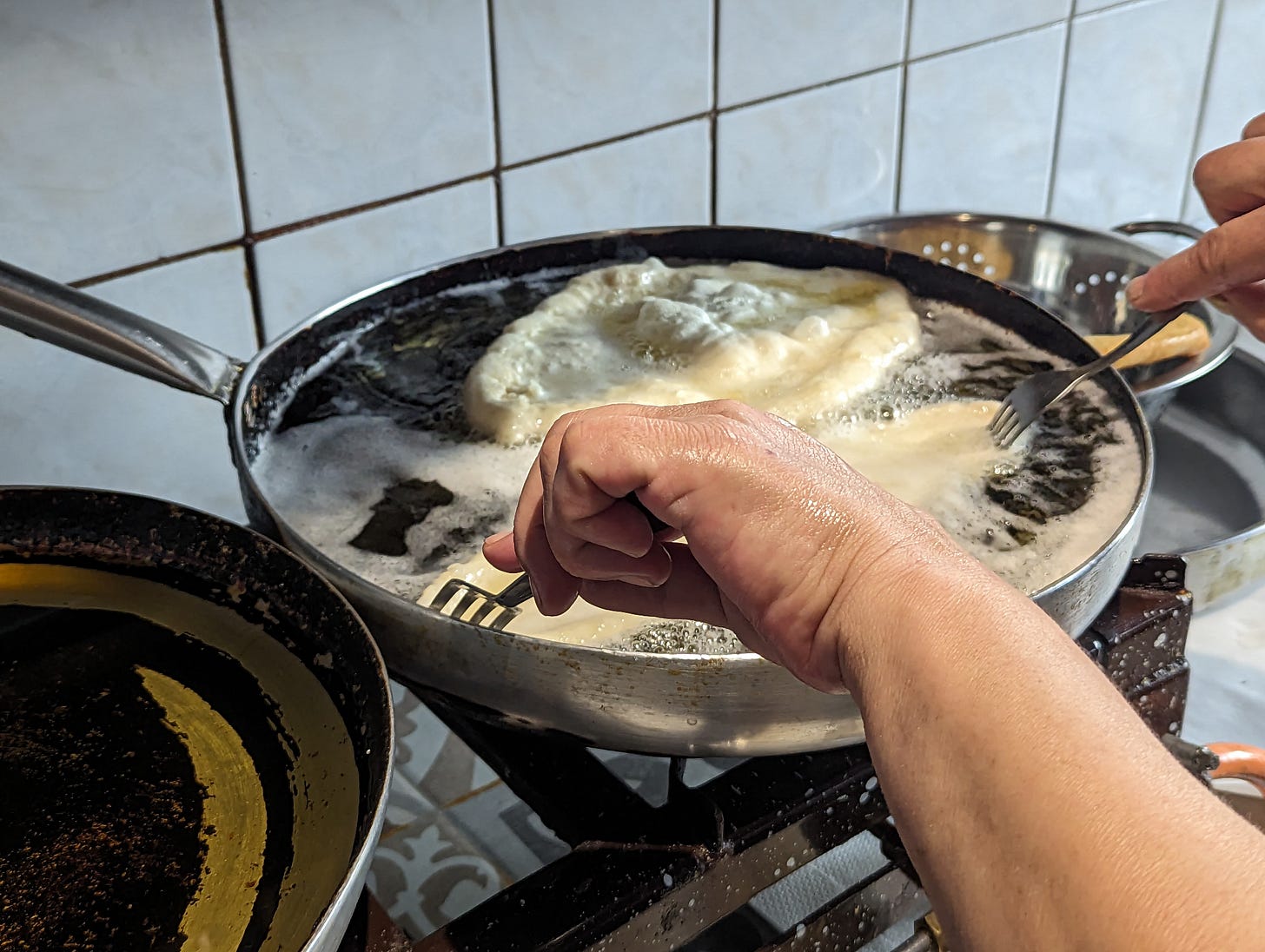
The most common way of serving travektes is simply fried and either sprinkled with sugar, most common these days unfortunately, or just plain as Costas and I enjoyed them during our breakfast in Las Hotel in Gytheion.
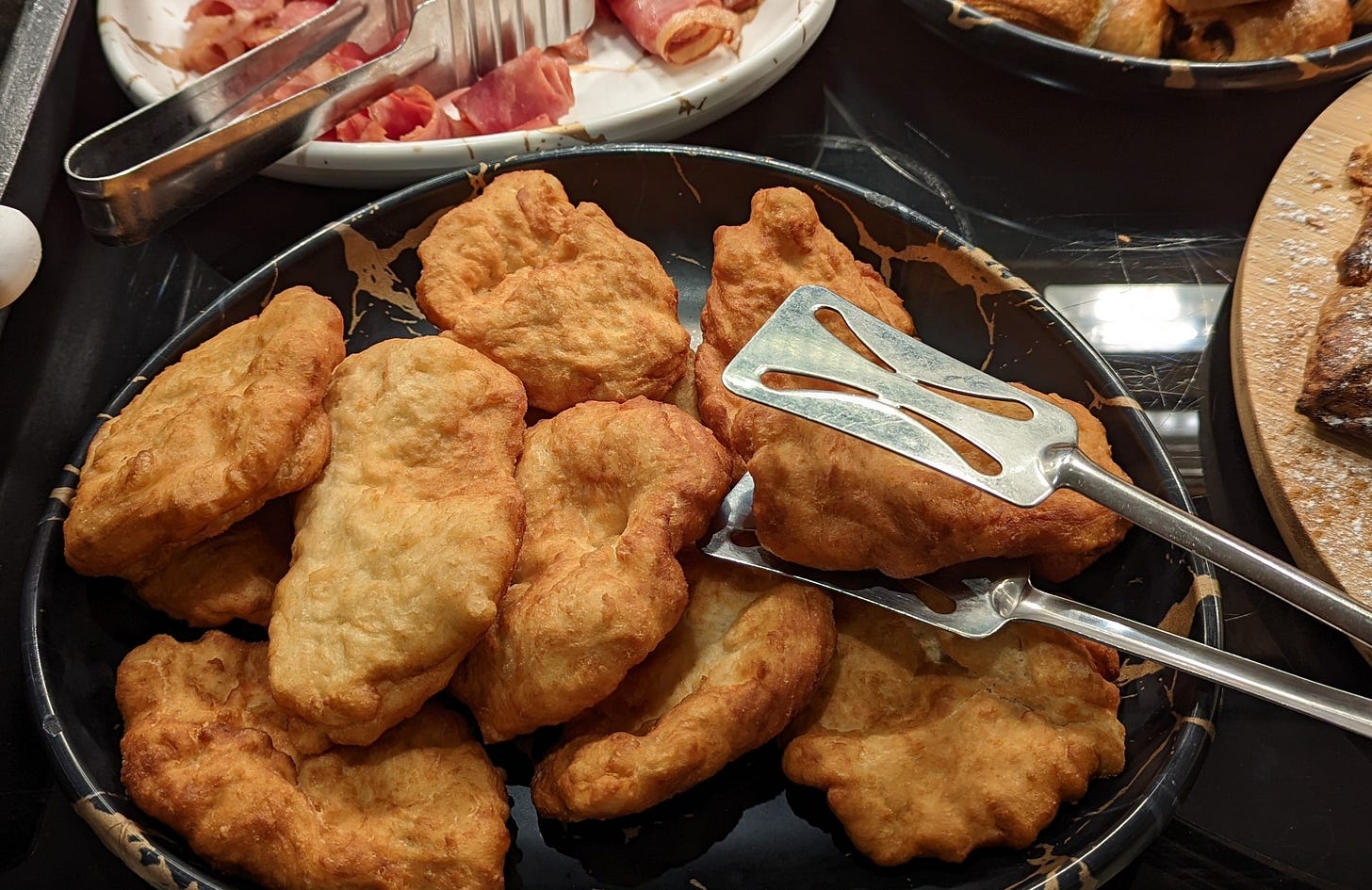
At the Old water Mill in Kyparissia, further north, which only demonstrates the way grains were grinded in past, due to the lack of water, the mill is now a lovely coffee shop with a charming lemon garden.
The fried bread is shaped as a round pita and accompanies coffee or herbal teas drizzled with honey, or paired with the local hard cheese —my choice.
Bakeries in Kalamata, Sparta, and all around southern Peloponnese, especially in the legendary Mani peninsula, where the saying goes that there is more olive oi than water, fried breads can have many shapes.
Often were the basic food in the past as the hard stony ground and the fierce sea winds don’t encourage the cultivation of vegetables or grains.
Nowadays ring-shaped lalangia or lalangites as they are called in various parts of the Peloponnese are sold at all the bakeries of course
and people offer them as meze by themselves or with spicy cheese and spreads. One can also find them with added aromatics like cinnamon and cloves —not my favorites.
Traviktes from Mani
(based on Argyro’s recipe)
For 10 pieces
¼ teaspoon instant dry yeast
1/4 teaspoon sea salt
1 teaspoon sugar
1 tablespoon olive oil
250-300 gr water
Olive oil for frying
In a bowl stir the dry yeast and sugar in lukewarm water and add the olive oil.
In another large bowl toss the flour and the salt. Mix with a large spoon to the a somewhat shaggy dough. Flour your hands, turn the dough onto the working surface and knead until it no longer sticks to the hands.
If need be, add a couple of tablespoons more flour, or if it is not very soft, add a couple of tablespoons water. Work with the hands to get a soft shiny dough.
Transfer to an oiled bowl, cover with oiled kitchen film and let rest for an hour until doubled.
With oiled hands divide the dough into 10 pieces ( about 40 grams each) and shape into oblong flat travektes.
Warm enough olive oil in medium skillet, enough to cover the traviktes, and fry two at a time for about 2 minutes, pressing lightly with a fork so that they don’t inflate, also piercing in one or two places. as they tur golden on the under side tur and fry to golden the other side.
Remove with a slotted spoon on double kitchen paper and continue frying the rest.
Serve sprinkled with good spicy cheese, like kefalotyri or Pecorino (my choice) or with sugar or honey.

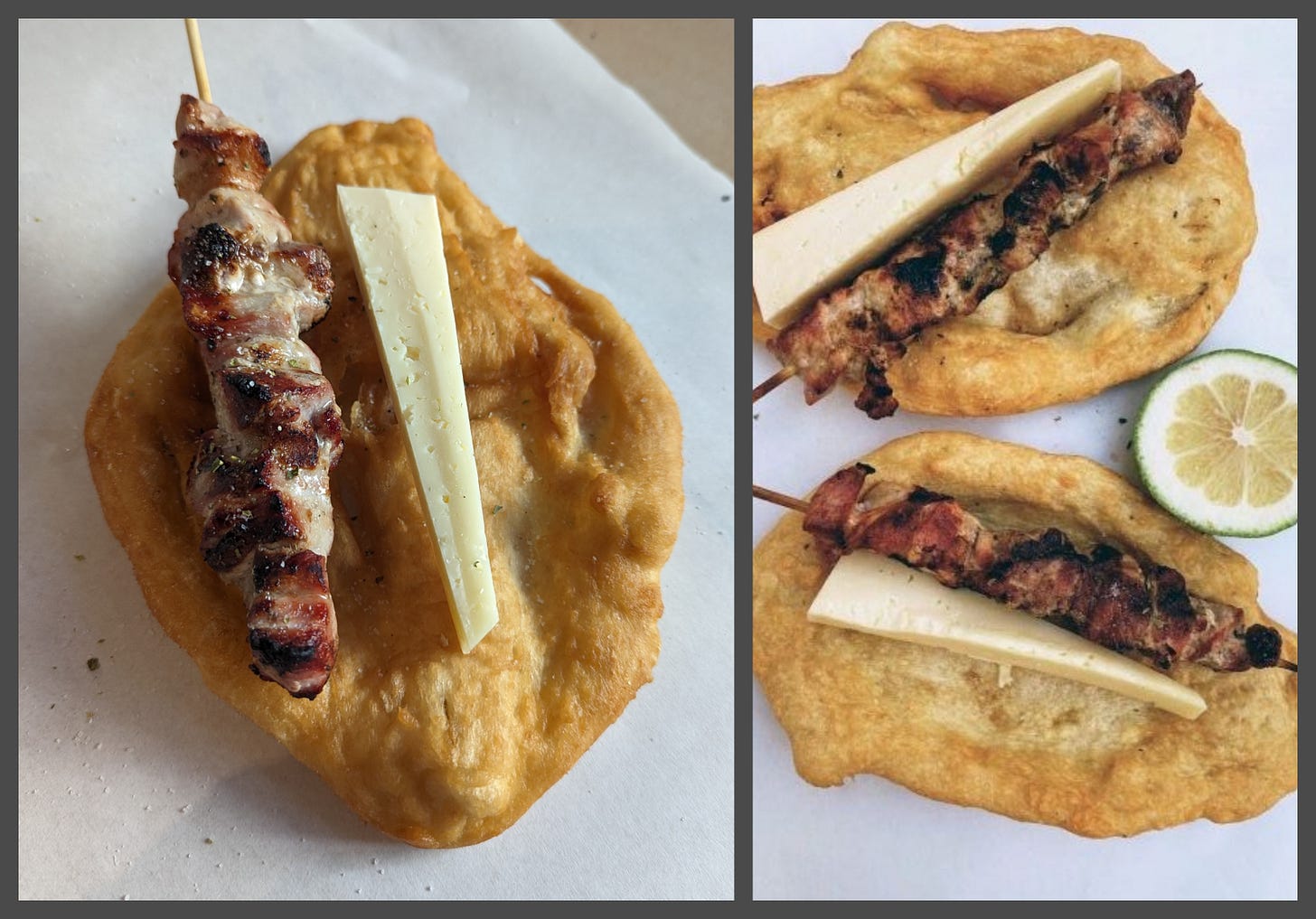
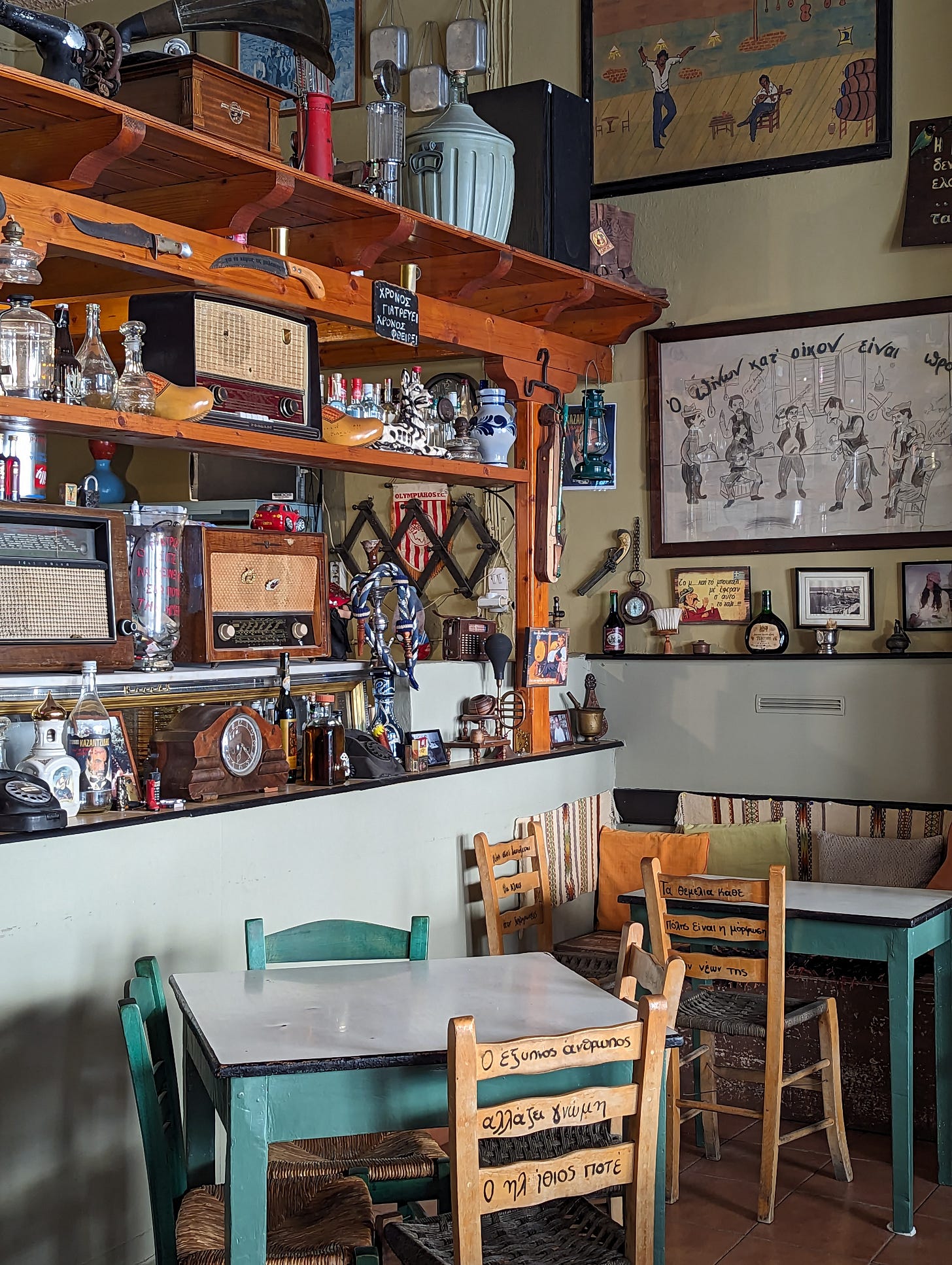
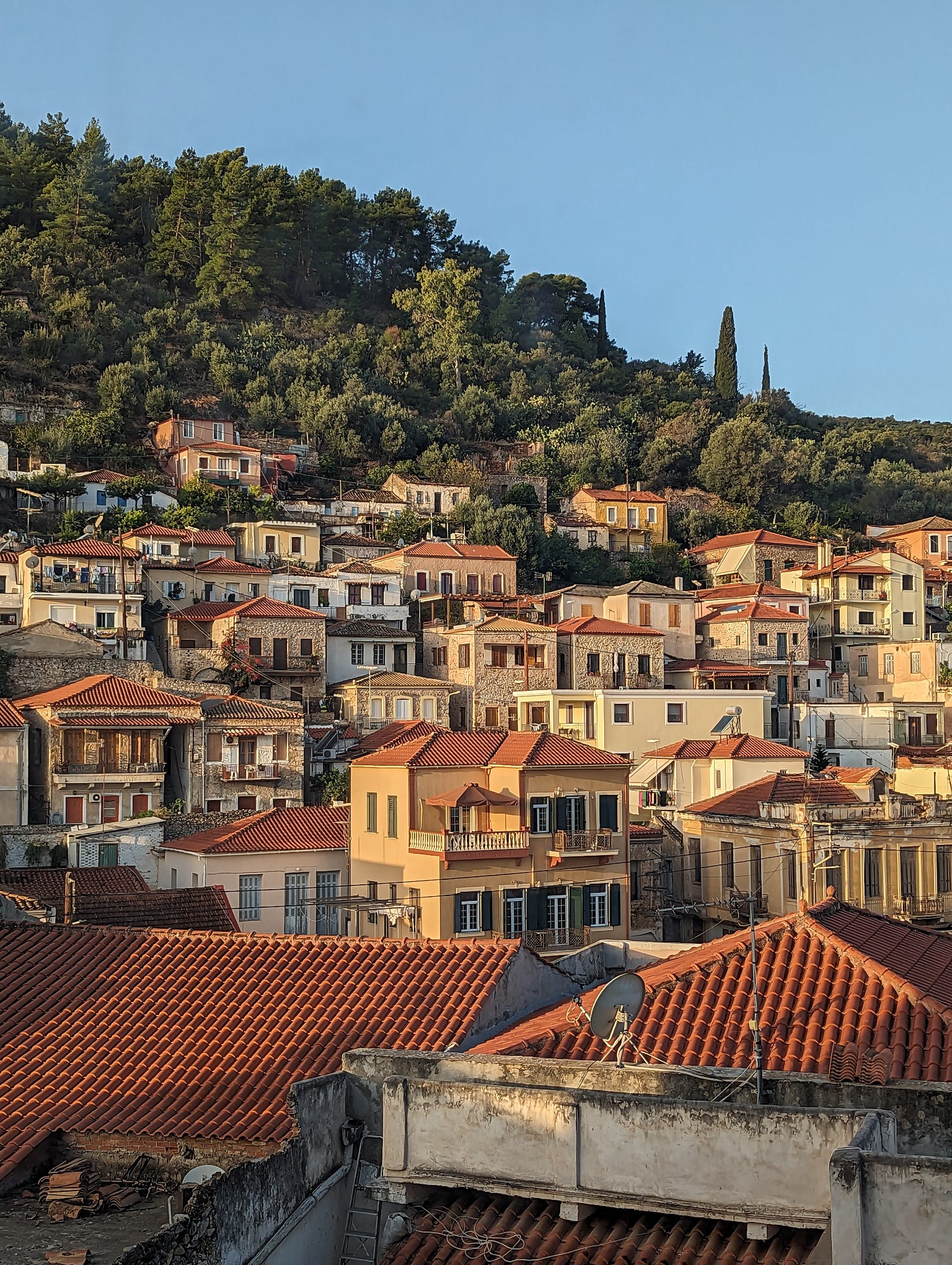
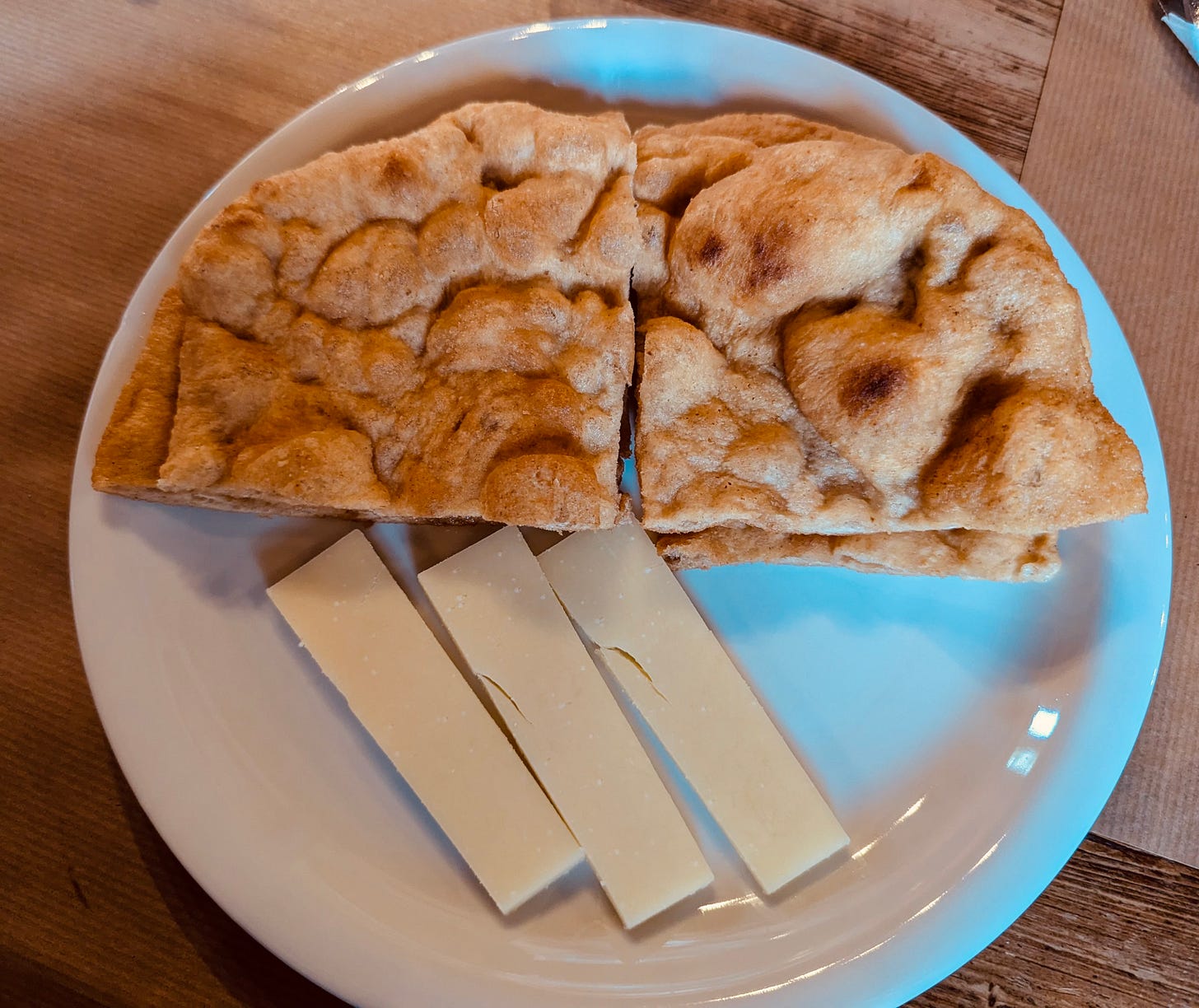
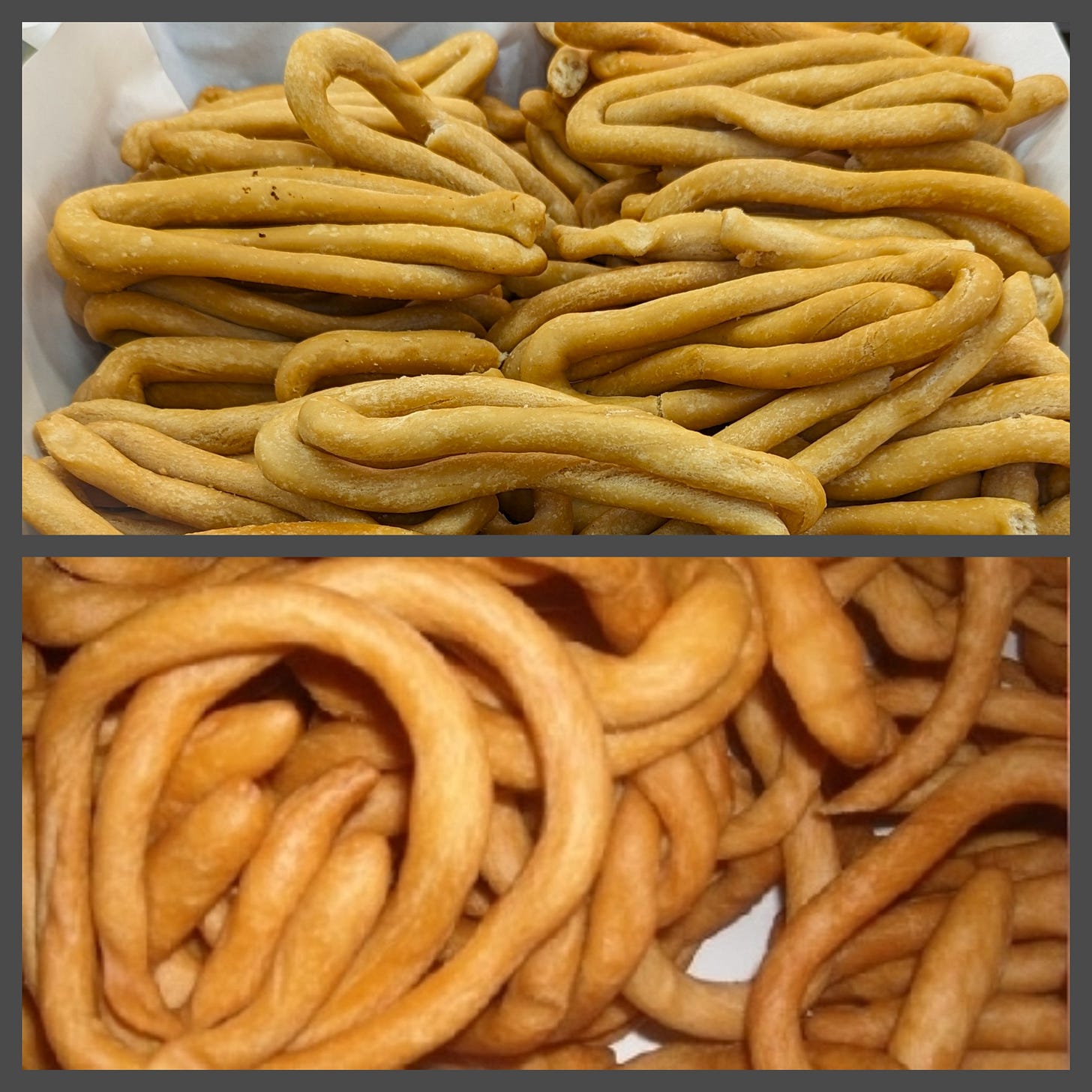
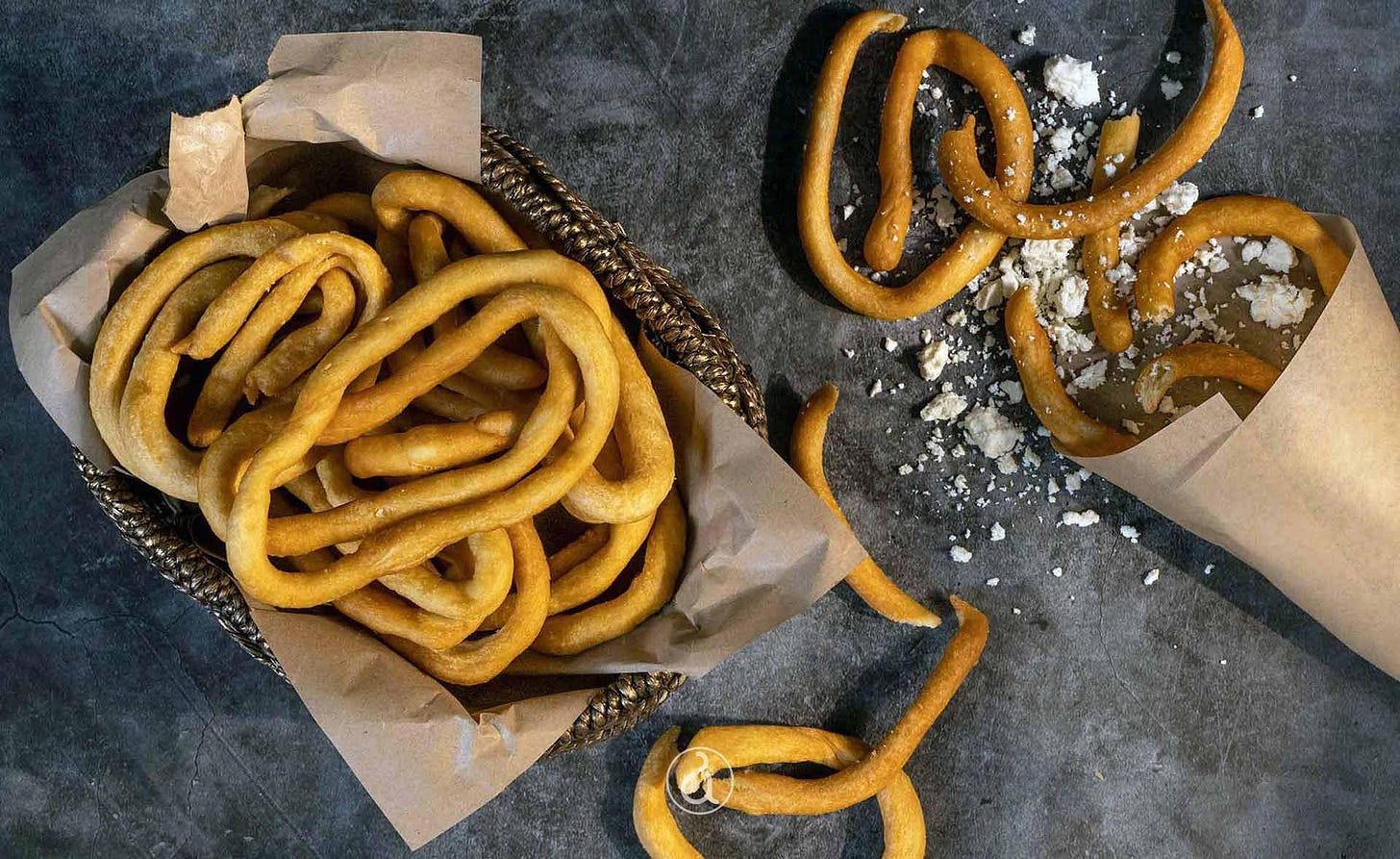
My γιαγιά, born in Kalamata, made lalagia every holiday. Even as she aged, there was my Uncle Jimmy to knead the dough and my mother and aunts to fry. It was the first thing I looked for on my first trip to Kalamata many years ago and on my most recent last year. Food memories are happy ones.
Very interesting, Aglaia. The skinny breads, lalangia, look much like the Spanish churro.